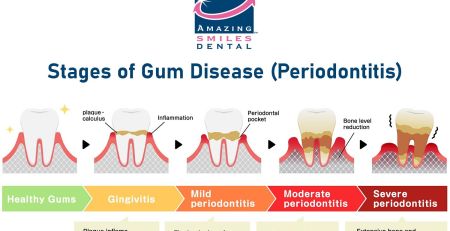Table of Contents
Root canal therapy, or endodontic therapy, is a specialised dental procedure that preserves a tooth severely decayed or infected. The treatment involves removing the damaged or infected pulp tissue from inside the tooth, followed by cleaning and sealing the tooth to prevent further issues.
While root canal treatments are safe and effective, they can be associated with specific side effects, risks, and complications.
Common Side Effects
One of the most frequently reported side effects after undergoing a root canal treatment is post-procedure pain and discomfort. It is common for patients to experience some level of pain and sensitivity in the treated area. This discomfort is typically manageable with over-the-counter pain relievers, such as ibuprofen or paracetamol, and sensitivity to pressure or temperature changes may occur for a few days as the tooth heals. This sensitivity is generally temporary.
Swelling is another potential side effect following the procedure. Patients may notice swelling in the gums or facial area around the treated tooth, particularly in the initial days post-treatment. This swelling is usually short-lived and can often be alleviated through ice pack applications and anti-inflammatory medications. However, it is essential to monitor the swelling and seek dental advice if it persists or worsens.
In rare cases, an infection can develop after a root canal treatment. This may occur if bacteria remain in the cleaned canal or re-enter through a poorly sealed tooth. Signs of infection include prolonged pain, swelling, and the presence of pus. Such infections may require additional treatment, including antibiotics or further tooth cleaning.
While root canal treatments can lead to temporary discomfort or complications, they are a crucial option for saving a tooth that has suffered significant damage.
Types of Infections from Root Canal Therapy
Root canal therapy is usually effective, but infections can occur for several reasons, including incomplete cleaning or complications. Here are the types of infections that may arise:
1) Primary Infection
This is the original infection that led to the root canal treatment, caused by bacteria invading the tooth’s pulp due to decay or cracks. The procedure aims to remove this infection.
2) Persistent Infection
If the root canal isn’t thoroughly cleaned or sealed, bacteria remain. Symptoms include ongoing pain and swelling.
3) Secondary Infection
Develops when new bacteria enter the tooth after the procedure due to improper sealing or damage to dental restorations.
4) Periapical Infection
If bacteria spread from the root canal site, it affects the area around the tooth’s root tip. Symptoms include pain and swelling near the tooth.
5) Chronic Apical Periodontitis
A long-term infection around the root tip, often from an unresolved infection, potentially leading to inflammation and bone loss.
6) Acute Apical Abscess
A severe infection marked by rapid pain and swelling from pus accumulation at the root tip. Immediate drainage and antibiotics are needed.
7) Lateral Periodontal Abscess
If bacteria spread, they develop in the gums next to the treated tooth. Symptoms include localised swelling and pain.
Following the initial root canal, a temporary filling may be placed, which can sometimes cause discomfort or dislodgement. Patients should follow their dentist’s guidelines to prevent complications.

Potential Risks and Complications from Root Canal Therapy
1) Incomplete Cleaning
If the root canal isn’t thoroughly cleaned, bacteria can remain, leading to infections. This may require re-treatment or an apicoectomy (removal of the root tip).
2) Tooth Fragility
Treated teeth are more brittle and prone to fractures. A dental crown is often recommended to reduce this risk.
3) Surrounding Damage
The procedure can unintentionally harm adjacent teeth, nerves, or the sinus cavity, especially in upper teeth. This can result in prolonged pain or numbness.
4) Instrument Breakage
Small instruments can break inside the canal. If fragments cannot be removed, they may impact treatment success and lead to infection or pain.
5) Sealing Issues
Proper root canal sealing is critical. Overfilling or underfilling can cause pain, infections, or treatment failure, requiring further dental work.
6) Allergic Reactions
Some patients may be allergic to materials like latex or medications used. It’s essential to inform your dentist of any known allergies.
7) Persistent Symptoms
Pain, swelling, or sensitivity may continue after treatment, indicating the need for further evaluation or alternative therapies.

8 Consequences of an Untreated Root Canal
Failing to treat a root canal can lead to serious issues. Here are the main consequences of ignoring treatment:
1) Increased Pain
Untreated infections can cause severe and persistent pain, making eating or doing daily activities hard.
2) Spread of Infection
The infection can spread to the surrounding gums, jawbone, and other teeth, complicating further treatment.
3) Abscess Formation
An untreated root canal can lead to a dental abscess, a painful pocket of pus that may cause swelling, fever, and overall illness.
4) Bone Loss
The infection can deteriorate the jawbone, weakening its structure and potentially leading to tooth loss.
5) Tooth Loss
Eventually, the tooth may be too damaged to save and require extraction, resulting in additional dental problems.
6) Systemic Infection
In severe cases, the infection may spread throughout the body, leading to serious health issues like sepsis.
7) Swelling and Cellulitis
When an infection spreads, it can cause significant swelling in the face or neck and may lead to cellulitis, which requires immediate medical attention.
8) Sinus Issues
The infection can affect the sinuses, causing sinusitis with symptoms like nasal congestion and facial pain.
Prompt root canal treatment can prevent these severe problems. If you experience tooth pain, sensitivity, or swelling, seek dental care immediately.

Prevention and Management of Root Canal Therapy Complications
Choose a skilled and experienced dentist or endodontist to minimise risks during root canal treatment. Their expertise significantly lowers the chances of complications.
Follow aftercare instructions carefully to ensure a successful recovery. Take prescribed medications, avoid chewing on the treated tooth until it’s fully restored, and maintain good oral hygiene to prevent infections and promote healing.
Regular follow-up appointments are crucial for monitoring the treated tooth and addressing any issues early on. This helps detect potential complications and supports long-term oral health.
Advanced technology, like digital radiography and cone-beam computed tomography (CBCT), enhances the diagnosis and treatment of root canals, reducing the risk of complications.
If you notice severe pain, prolonged swelling, or signs of infection after treatment, contact your dentist immediately to prevent complications from worsening.
Conclusion: Take the Next Step Towards Optimal Oral Health with Amazing Smiles Dental
Root canal treatment is an effective way to save a damaged or infected tooth. Understanding the possible risks and complications is essential for making informed choices about your dental care. By staying informed and adhering to preventive strategies, you can improve your chances of a positive outcome.
If you have concerns about root canal therapy or other dental issues, contact us. Amazing Smiles Dental is dedicated to providing exceptional care and ensuring patient satisfaction. Our experienced team is here to help you achieve a healthy, beautiful smile.
Contact Amazing Smiles Dental to inquire or schedule an appointment. Your journey to optimal oral health starts here.
Disclaimer: This article is for informational purposes only and is not a substitute for professional medical advice, diagnosis, or treatment. Always seek the advice of your dentist, physician, or other qualified health provider with any questions you may have regarding a medical condition. Never disregard professional medical advice or delay seeking it because of something you have read in this article.







